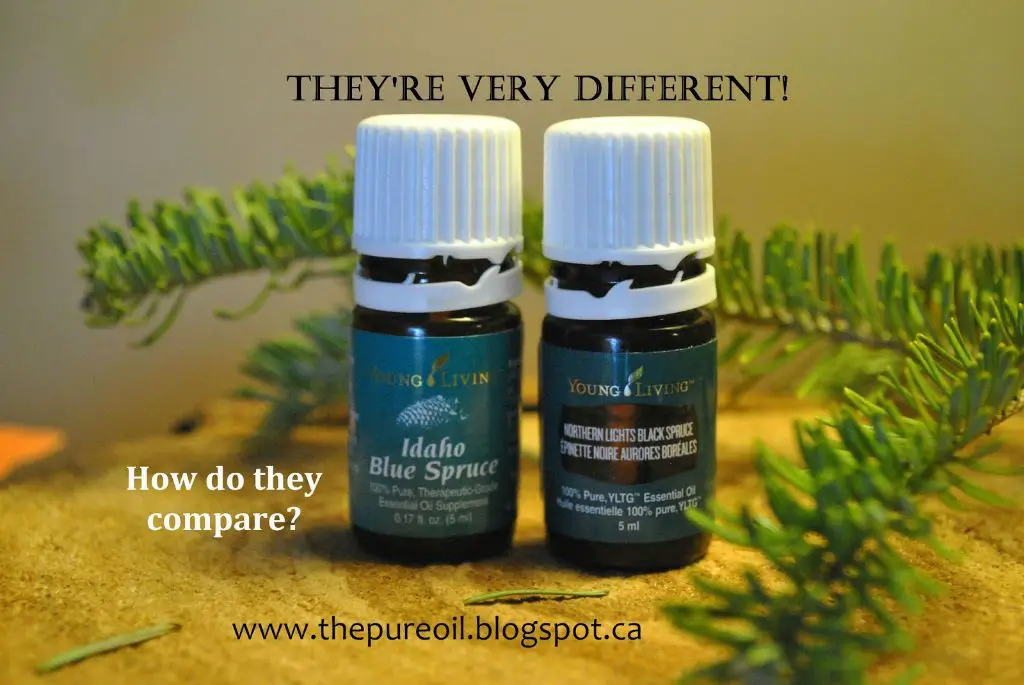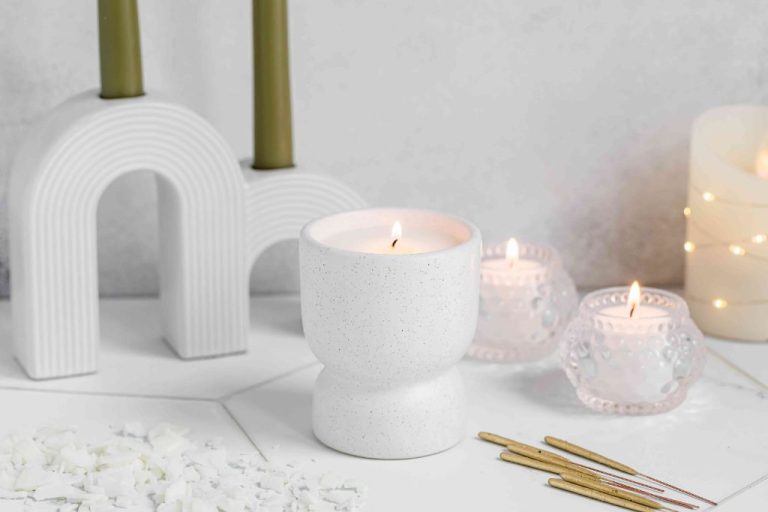What Is The Difference Between Black Spruce And Blue Spruce Essential Oils?
Introducing Black Spruce and Blue Spruce Essential Oils
Essential oils are concentrated, hydrophobic liquids extracted from plants that capture the plant’s scent and flavor, or “essence.” They are produced through distillation and cold pressing and contain the natural chemicals of the plant source.
Black spruce essential oil comes from the needle and twigs of the Picea mariana tree, while blue spruce essential oil comes from the Picea pungens tree. Both are coniferous evergreen trees in the Pinaceae family. The oils derived from these spruce species have a similar aroma profile and share some benefits, but also have key differences in chemical composition.
Origins and Historical Uses
Black spruce (Picea mariana) trees are native to North America and are found across Canada and the northeastern and northcentral United States. They prefer moist, acidic soils and are commonly found in bogs, swamps, and coniferous forests (Britannica).
Blue spruce (Picea pungens) trees are native to the Rocky Mountains in the western United States. They are found in the mountains of Colorado, Utah, New Mexico, Arizona, Wyoming and Montana (Britannica).
Native Americans traditionally used spruce trees for shelter, food, medicine and tools. The inner bark of spruce trees was boiled into teas to treat lung ailments, rheumatism and scurvy. Spruce pitch was used to waterproof canoes and baskets. The sharp needles were used as sewing needles. The flexible branches were used to weave baskets and the fragrant boughs were used for incense and bedding (The Druid’s Garden).
Extraction Methods
Both Black Spruce and Blue Spruce essential oils are extracted from the needles of their respective trees through steam distillation. This process involves using steam to extract the aromatic compounds and essential oils from the plant material.
The main difference lies in the exact species of spruce tree used. Black Spruce essential oil specifically comes from the Picea mariana tree, while Blue Spruce comes from the Picea pungens tree.
Due to the similar chemical composition of the two oils, the extraction process is largely the same. The steam causes the oil pockets within the needles to burst and release the aromatic compounds. The oils then evaporate into the steam and condense back into liquid form upon cooling, allowing collection of the essential oil.
One minor difference is that Blue Spruce needles require slightly more processing after harvesting to optimize oil yield. The needles may be left to dry for a period before distillation. Overall, steam distillation allows for an efficient extraction method to obtain these potent essential oils from the spruce trees.
Chemical Composition
The main chemical constituents in Black Spruce essential oil include alpha-pinene, beta-pinene, delta-3-carene, and limonene.1 It contains high levels of monoterpenes which provide many therapeutic benefits.
Blue Spruce essential oil also contains alpha-pinene and beta-pinene as its major components, but has a higher percentage of bornyl acetate compared to Black Spruce. It also contains camphene, delta-3-carene, and limonene.2
The key difference in chemical makeup is that Black Spruce contains more beta-pinene, while Blue Spruce has more bornyl acetate. Black Spruce is dominated by monoterpenes, while Blue Spruce has a more balanced composition of monoterpenes and sesquiterpenes.
Aromatherapy Benefits
Both Black Spruce and Blue Spruce essential oils are commonly used in aromatherapy for their calming and grounding effects. However, they have some subtle differences.

Black Spruce has a deeper, earthier aroma that is intensely grounding and centering. It’s thought to promote emotional balance and inner peace (Source). Blue Spruce has a brighter, sharper scent that is uplifting. It’s known for improving mood and promoting vitality (Source).
In aromatherapy, Black Spruce may be preferred for alleviating stress and anxiety, while Blue Spruce can provide an energizing boost. However, both oils have calming effects.
Medicinal Benefits
Research has shown that both Black Spruce and Blue Spruce essential oils have medicinal properties, but there are some key differences between the two.
Black Spruce essential oil is often used to help relieve pain and inflammation. One study found it reduced inflammatory markers in mice with ear edema (swelling) (https://www.ncbi.nlm.nih.gov/pubmed/25240144). Its anti-inflammatory effects may help treat conditions like arthritis, muscle pain, and swelling.
Blue Spruce essential oil has also exhibited anti-inflammatory effects in research. A study on human chondrocytes (cartilage cells) found Blue Spruce oil inhibited inflammatory cytokines like IL-6 and IL-8 (https://www.ncbi.nlm.nih.gov/pubmed/22432517). This suggests it may help relieve joint pain and inflammation.
In addition, Blue Spruce oil has shown antimicrobial activity against certain bacteria and fungi, indicating potential therapeutic uses (https://www.ncbi.nlm.nih.gov/pubmed/22432517). Black Spruce does not appear to share these antimicrobial effects.
Overall, both oils have anti-inflammatory properties but Blue Spruce also exhibits antimicrobial effects. However, more research in humans is still needed to confirm their medicinal benefits.
Safety and Precautions When Using Black Spruce or Blue Spruce Essential Oils
Essential oils can be incredibly beneficial when used properly, but there are some safety guidelines to keep in mind. Here are some precautions for using black spruce or blue spruce essential oil:
Always dilute the essential oil with a carrier oil like coconut oil or jojoba oil before applying to skin. Using undiluted essential oils on skin can cause irritation in some individuals. Start with low concentrations like 1-2% dilution and increase gradually as needed.
Avoid contact with eyes and mucous membranes. If contact occurs, flush with water immediately. Keep oils away from children and pets to prevent accidental ingestion.
Test for skin sensitivity by applying a diluted amount on a small patch of skin first. Discontinue use if any irritation occurs.
Pregnant women should consult their doctor before using since these oils can stimulate contractions. The oils may also be contraindicated for people with epilepsy or hypertension.
Do not ingest essential oils unless under the guidance of a qualified professional. Both spruce oils are considered non-toxic, but ingestion may cause stomach upset, nausea or other side effects in some individuals.
When diffusing, use for short periods of time to avoid potential respiratory irritation. Use caution when driving or operating heavy machinery until you know how the oil affects your concentration and alertness.
Keep oils away from heat, light and air to help preserve potency and shelf life. Properly store them in a cool, dark place in tightly sealed bottles.
As with any essential oil or aromatherapy use, consult your doctor if you have any ongoing medical conditions or are taking medication to prevent any contraindications.
How to Use
Both Black Spruce and Blue Spruce essential oils should always be diluted before topical application. A typical dilution is 3-5 drops of essential oil per ounce of carrier oil like coconut or jojoba oil.
For diffusion, the recommended Black Spruce dilution is 1-2 drops per 100 sq. ft. Blue Spruce should be more diluted at 1 drop per 100 sq. ft. since it has a stronger aroma. Diffuse for 30-60 minutes up to 4 times daily.
Topical use of Black Spruce can be applied to the chest, back and bottom of feet. Blue Spruce is often applied to pulse points like the wrists and temples. Always do a patch test before wider application.
Black Spruce mixes well with pine, cypress and cedarwood oils. Blue Spruce blends well with citrus oils like grapefruit and lemon. Avoid getting either oil in eyes or sensitive areas.
When inhaling either oil directly, hold the open bottle 1-2 inches away from nose and inhale gently. Use caution not to ingest essential oils.
Both Spruce oils should be stored away from light and heat to preserve potency. Shelf life is generally 1-2 years.
Price and Availability
Black spruce and blue spruce essential oils can be purchased from various online retailers that specialize in essential oils and aromatherapy products. Some reputable places to buy these oils include:
Black Spruce Essential Oil
- Eden’s Garden – $23 for 30ml
- Plant Therapy – $14.95 for 30ml
- Rocky Mountain Oils – $16 for 30ml
Blue Spruce Essential Oil
- Young Living – $33.33 for 5ml
- Do Essential Oils – $24.95 for 5ml
- Amazon – $26.99 for 5ml
As you can see, black spruce essential oil is typically less expensive than blue spruce at around $15-25 for a 30ml bottle compared to $25-35 for just 5ml of blue spruce. The higher cost of blue spruce is likely due to more limited availability and the proprietary nature of some blue spruce oils like Young Living’s Idaho Blue Spruce.
Summary and Key Differences
In summary, the main differences between Black Spruce and Blue Spruce essential oils are:
- Black Spruce has a deeper, earthier, smoother scent, while Blue Spruce is lighter and sharper.
- Black Spruce comes from the Picea mariana tree, while Blue Spruce comes from the Picea pungens tree.
- Black Spruce contains higher levels of beta-pinene, bornyl acetate, and other sesquiterpenes, giving it more potent anti-inflammatory and relaxing properties.
- Blue Spruce has higher levels of alpha-pinene, limonene, and other monoterpenes, making it more energizing.
- Black Spruce is often used to relieve muscle aches, reduce anxiety, improve sleep, and support respiratory health. Blue Spruce is popular for increasing energy, focus, and motivation.
In summary, I would recommend using Black Spruce essential oil when you want to promote relaxation, ease anxiety, reduce pain and inflammation, or boost respiratory health. Choose Blue Spruce when you need an energizing and uplifting aroma to increase alertness, concentration, and motivation.




